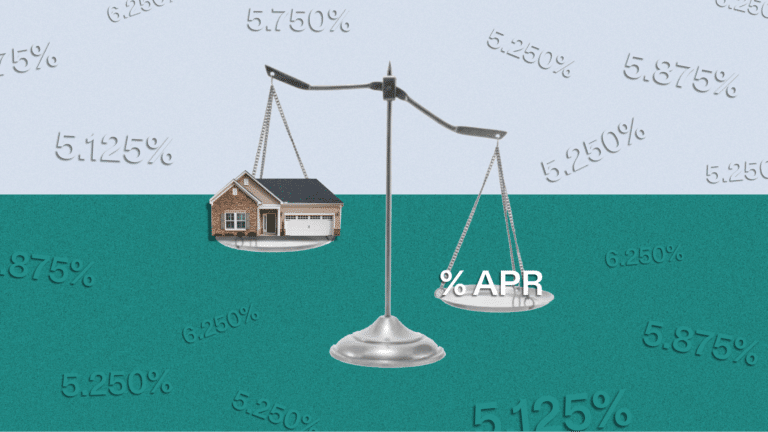Renting isn’t exactly flushing your money down the drain, of course. Paying rent gives you somewhere to live and a place to store all your stuff. And that’s important.
But unlike renters, homeowners get the benefit of housing while also building equity in an asset that adds to their long-term wealth and financial well-being. And in most parts of the country, the average mortgage payment is actually lower than the average rent for a comparable home.
For many, the biggest obstacle to homeownership is saving the money needed for a down payment. With rent to pay, other bills to cover, and a life to live, how exactly is a first-time homebuyer supposed to save thousands or tens-of-thousands of dollars?
We won’t lie: it’s not easy to save for a down payment on a home. But it’s not impossible.
Young people, working people, people without trust funds or generous relatives? They become homeowners all the time. If you’re interested in joining them, here are some strategies to consider for saving for a down payment. (Hint: giving up avocado toast is not one of them.)
1. You May Not Need As Much Money As You Imagine

You’ve probably heard that you need to put down 20% to buy a house. Your parents probably put down 20% when they bought their home however long ago. But times change. With the average home in America selling for around $250,000, a down payment of 20% would be $50,000 — which currently happens to be more than an entire year’s worth of wages for the average Millennial. Ouch.
The good news? You don’t need 20% of the cost of a house in savings before you can become a homeowner. Last year, the average homebuyer only put down 10% of the cost of their home. And for first-time homebuyers, the average down payment was only 5%. Remember, that’s the average. Tt’s possible to get a mortgage and finance a home purchase with even less saved for a down payment.
2. Downside of a Lower Down Payment
Now, before you run to the nearest open house and shout “I’ll take it!” at the real estate professional with the sign-in sheet… It’s worth noting that low down payment mortgages typically require mortgage insurance. That’s an additional expense those putting down 20% aren’t required to pay. It should also go without saying that the more you put down, the lower your monthly mortgage payment. And the more you put down, the less you’ll pay in interest to the lender financing your home purchase.
So if your salary is higher than the average Millennial’s, or if you live in a housing market with more affordable-than-average homes for sale, a 20% down payment may be a good target for you. Just remember that that 20% number is not a set-in-stone requirement.
You can browse real estate listings online to get a rough idea of what homes cost in your area. From there, you can decide on a savings goal: the amount of money you’ll plan to save for your down payment before you start shopping for a home.
(Remember, housing prices fluctuate. A down payment won’t be the only thing you need savings for when you own a home. That means your savings goal may be a bit of a moving target. When in doubt, it doesn’t hurt to plan to save more than you think you’ll actually need.)
3. Make a Budget, If You Don’t Already Have One

As a future homeowner, having a budget and saving money for things like home maintenance will be important. Plus, it’s nearly impossible to find additional ways to save your money if you don’t really know how you’re currently spending it.
If you’re not a spreadsheets and numbers person, the idea of making a budget can feel a little intimidating. But baking a budget doesn’t need to be complicated. Take a good look at your income, and subtract your on-going bills and expenses. Then, try to divide the rest of your spending into categories that make sense for you. You can start with broad categories like ‘Food’ or ‘Travel’. It might also make more sense to break your spending down into more specific categories. After all, ’Groceries’ are a different sort of ‘Food’ expense than ‘Eating Out’. And if you’re not sure how much of your money you’re spending in different areas? Well, you may need to save receipts or check your bank statements for awhile.
Hopefully, you’re already in the habit of saving some money each month. If not, don’t fret: there’s no time like the present. (Want some ideas for where, exactly, to park your savings while you build up your down payment? We’ve got you covered.)
4. Cut Your Expenses

There are plenty of so-called financial gurus who love to point out all the ways in which cutting out little expenses can add up to big savings over time. Cut out your workday coffee habit, and you can save $1,000 a year!
And it is true that little costs add up, over time.
But if your strategy for saving serious money is to just cut out all the little things and wait for the savings to accumulate, you’ll probably be waiting a long, long time.
If you eliminate a $4-per-workday latte and add that $20 to the bank every week, it’ll take you almost a decade to clear the five-figure savings mark. Now, if your goal is to to save $50,000 for a 20% down payment on an average home for sale in 2018, and you’re trying to reach that goal by setting aside $20 a week, it’ll take you more than 48 years to get the money together.
If you’re serious about buying a home, cutting out small but unnecessary expenditures won’t help nearly as much as eliminating bigger expenses.
5. Think Big
Start by thinking about how you might reduce your biggest expenses first. Can you rent a smaller or less expensive apartment while you’re saving for your future home? Or live with a roommate? Or (gulp) move back home with your folks for a year? Maybe you can plan a low-key staycation instead of adding stamps to your passport. Or keep your old-and-reliable car in good working order and forgo buying a new one for another few years.
Once you’ve considered ways to reduce your biggest expenses, you can start moving down to lower or mid-range expenses. Maybe you can give up that gym membership you’re not really utilizing. Or swap your cable bill for a streaming service. Maybe you can keep your old phone one more year instead of upgrading to the latest and greatest device. Have you checked your car insurance rate lately? Perhaps you can save money by switching to a competitor.
Get creative. Just remember that you’ve still got to live your life between now and when you ultimately have enough saved for a down payment. Eating packaged ramen for dinner every night for the next three years might help you save money. But it will also probably leave you miserable (and nutrient-deprived, to boot.)
6. Increase Your Earnings

You’ve probably guessed as much, but we’ll spell it out here. The real trick to saving enough money for a down payment on a home isn’t just in cutting your expenses down to the bare minimum. That can help, of course. But if you want to save big, finding ways to earn more (and saving those extra earnings) will get you to your savings goal much faster than just spending less.
Increasing your income isn’t necessarily about finding a higher-paying job or a more lucrative career—though if that’s an option you haven’t considered, by all means, consider it.
Maybe it’s time to ask your boss for a small raise. If it works, you can funnel the extra part of your future paychecks directly into your savings. You won’t miss money you haven’t gotten used to spending, and you’ll reach your goal that much more quickly.
Did you get a big tax refund? An end of year bonus? A birthday check from your dear Aunt Ida? Dropping any extra funds directly into your down payment savings account should help you avoid temptation. You can build your nest egg for your future home faster that way.
7. Consider a Side Hustle
Taking on a second job, a side gig, or project-based freelance work, and saving those funds for your down payment can help you increase your savings in a hurry. You might not want to work crazy hours or live super frugally forever. But if you play your card right, you won’t have to.
Earning enough to pay rent and save for a down payment isn’t easy.
But if your future mortgage payment isn’t much more than your current rent, you can think of the hard work of finding the additional funds you need to squirrel away for that down payment as a temporary project. With a little bit of dedication, you’ll be putting a down payment on your first home before you know it.






